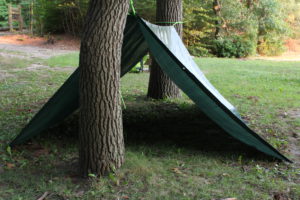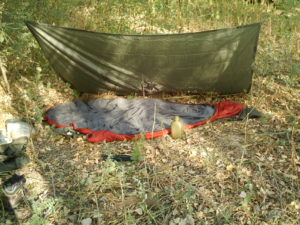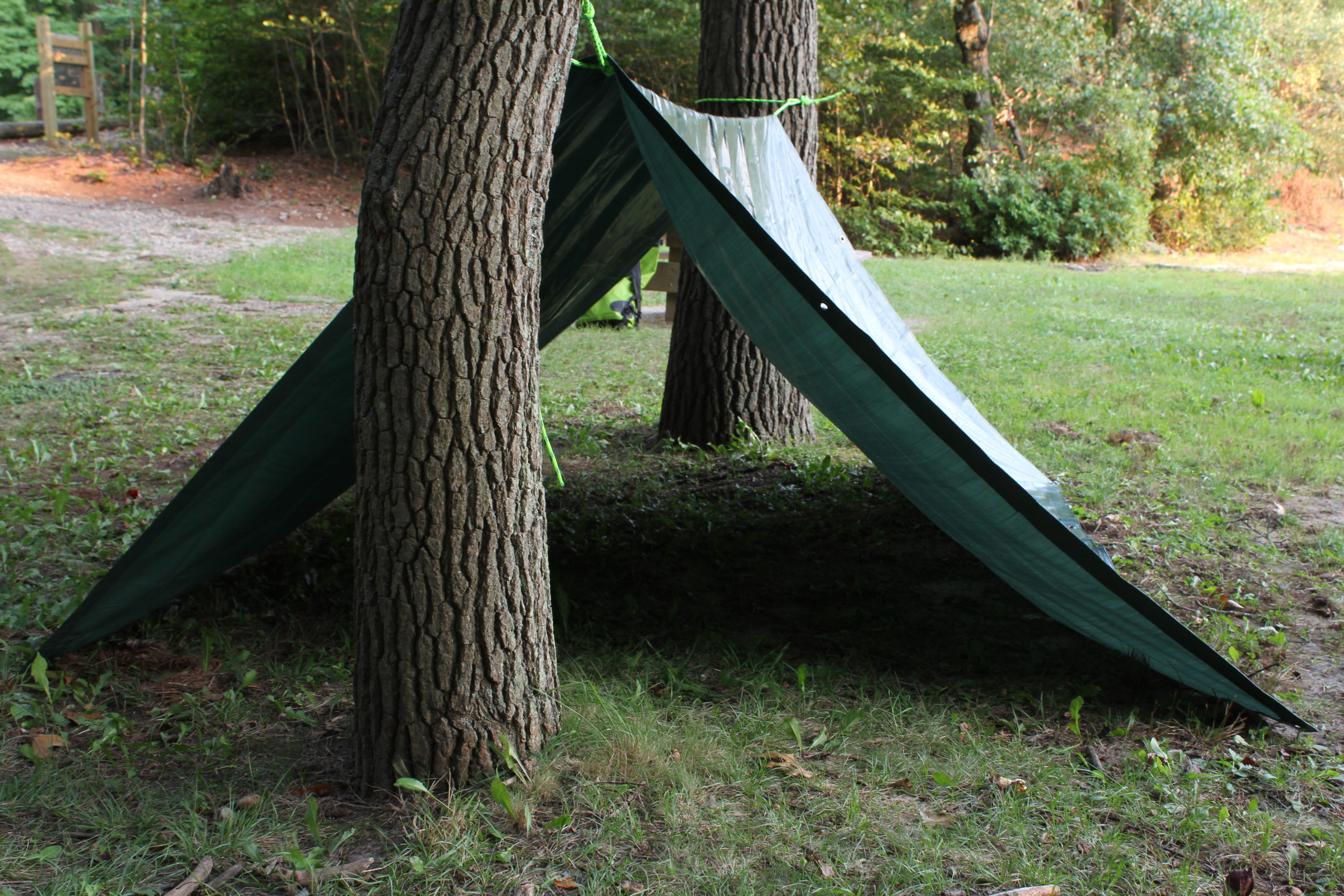Having shelter is a luxury in a survival situation, but during an emergency, having some type of shelter from the elements can help moral. An easy shelter to use would be a tent, but you may not have access to one. A tarp and some cord can be used in place of a tent, and knowing how to make shelter this way could come in handy.
Tarp and Cordage
A tarp and what type of cord you choose can be easily stored in bug-out-bags, don’t take up much room, and are lightweight.
You will need a tarp that is at least 10′ by10′ in size and this will determine the size of the shelter. A 10′ by 10′ tarp with the basic A-frame design with give a center height of 5′ just as an example.
The cord you use needs to be easily manipulated and not stretch. Most types of rope will work but carrying 550 paracord is your best bet. This paracord can be used for many other things and should be a part of your survival kit. Dental floss is also a handy item to keep with your survival kit, and can be used as your cordage for a tarp shelter or other cordage needs.
Making Shelter With a Tarp
The easiest shelter to make with a tarp is the A-frame. This can be done by locating two trees at least 10 feet apart, tying the cord between them and hanging the tarp over the cord getting it even on both sides. Sticks can be used in the holes on the side to keep the sides out and in place if you don’t have stakes with you. All you will need to is place the stick in the hole and into the ground a bit for the tarp sides to stay in place. Tent stakes will make this easier, but if you must use what is available sticks are the next best thing. You may have to cut these sticks from a branch as the ones you may find on the ground will be brittle and break from rot. One other option is to use cord to tie the sides out, but this will take more time to take the shelter down if you must move out quickly.
Another type of shelter to build with a tarp is where you fold the tarp into thirds so you will have a floor and two sides. It is made the same way as the a-frame to start, but you will need cord for one side of the floor and stakes for the other side. This will keep the sides out and you off the ground during the night while keeping you sheltered from the weather. This will shorten the center height of the shelter, so considering a larger size might be necessary. Just remember that you will have to manipulate the tarp to both put it up and take it down, so don’t get one so large that you cannot handle it yourself.
Other Shelters
There are other ways to make shelter during emergencies and if you will be staying in one place for an extended period, these will be beneficial. The tarp and cord will make these shelters more weather proof and easier to build as well. The most common is a lean to using small trees and leaves as the roof.
A tent is the easiest alternative for shelter but these can be large and hard to transport when on foot. The tarp is easy to put up and take down, easy to transport and pack away making it the choice for shelter when you need it most.
Conclusion
During an emergency or disaster you may need shelter. The easy long term choice would be a tent, but for temporary shelter that would be used for a night or two, easily transported, set up and taken down, a tarp and cord will be the better choice. The two designs discussed here are the simplest to erect, but there are other ways to use the tarp for shelter. You will be exposed to the ground with a tarp shelter, but a lightweight emergency sleeping bag can be purchased to use. These are small and lightweight as well, and can be packed away in your bug-out-bag for when you may ever need it. Shelter is one aspect that can be forgotten when an emergency hits, but if you keep a tarp and cord in your emergency kit you will have a shelter option for protection.
I welcome all comments that can expand on this topic, as well as questions for more information. Just leave them below and I will respond as soon as I can.
